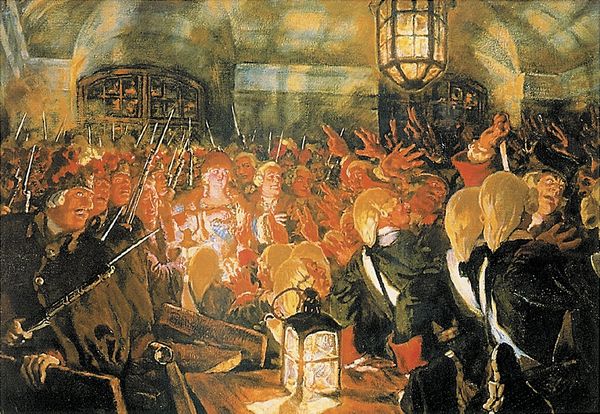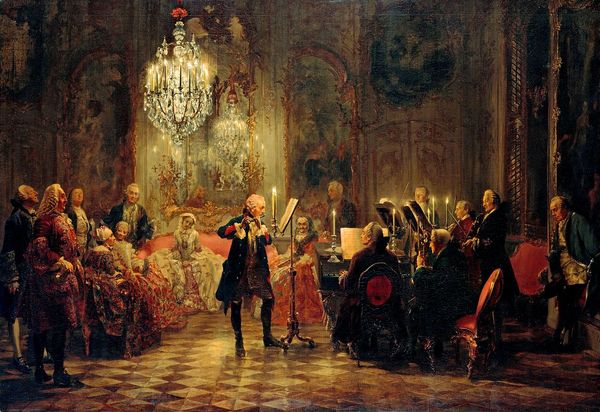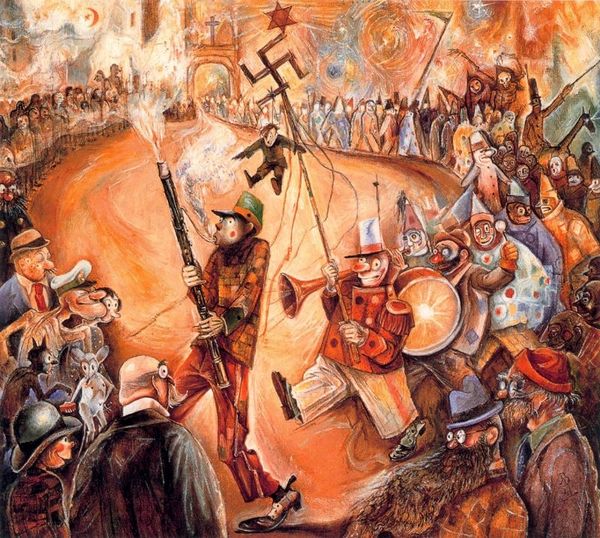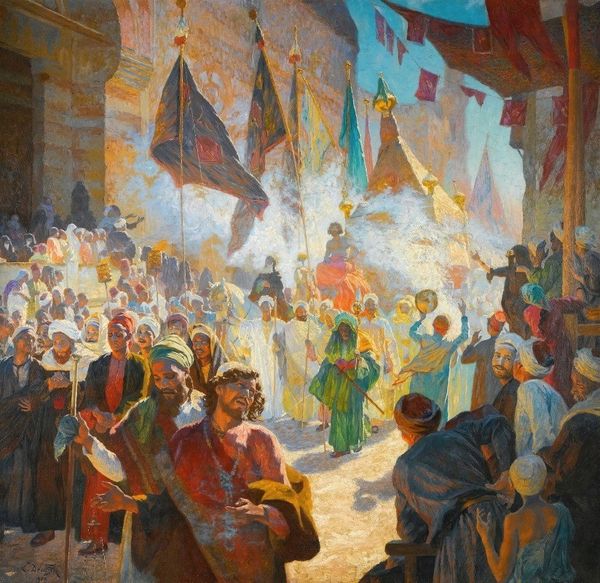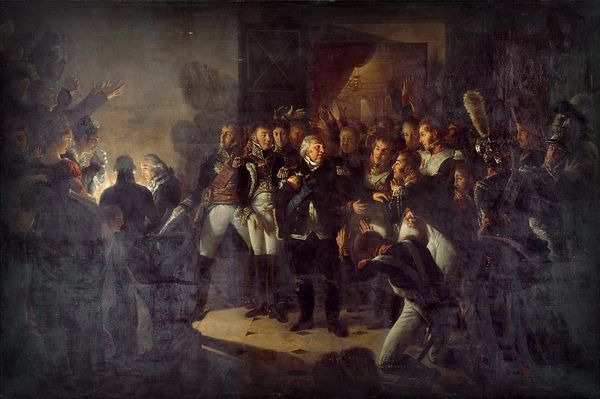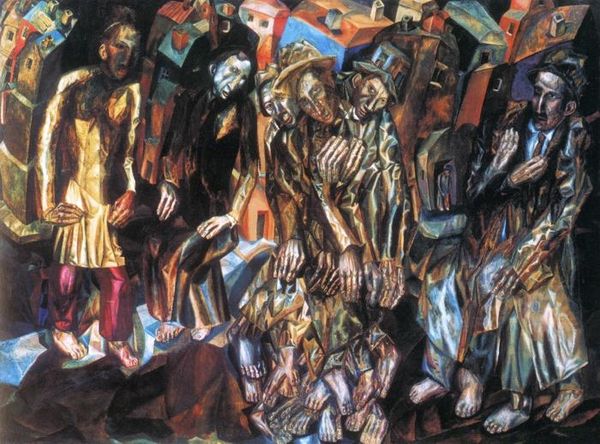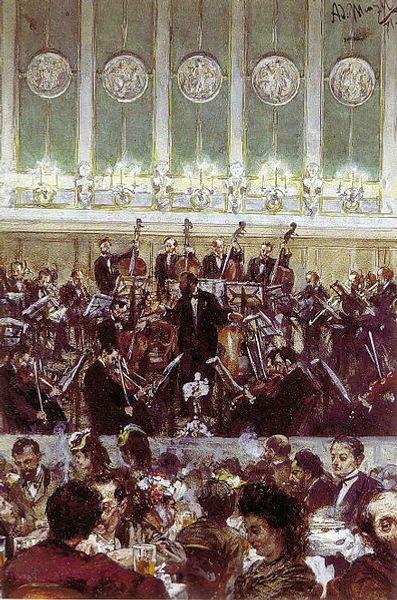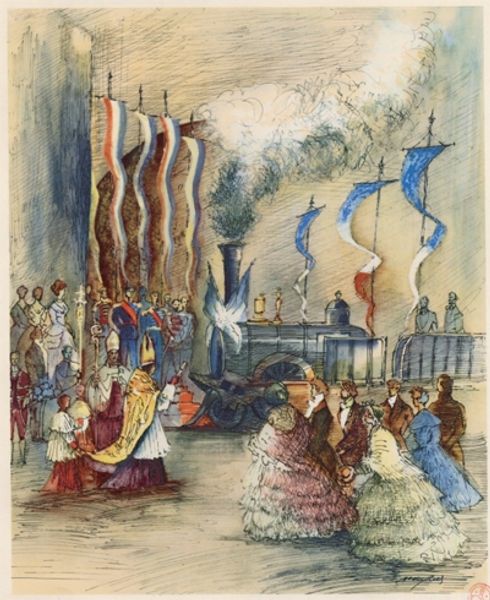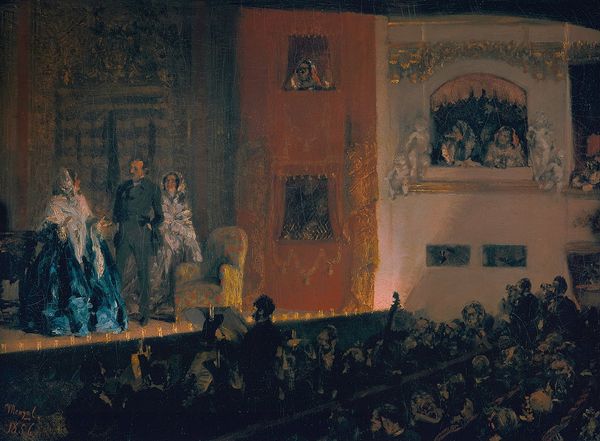
painting, oil-paint
#
portrait
#
painting
#
oil-paint
#
oil painting
#
group-portraits
#
expressionism
#
genre-painting
#
modernism
Copyright: Public domain US
Curator: Max Oppenheimer's 1923 painting, "Orchestra," is a truly captivating piece. Editor: Absolutely! The sheer density of figures creates a powerful sense of being immersed in a cacophony of sound and emotion. You almost hear the discordant notes before truly analyzing the piece. Curator: Oppenheimer certainly captured that feeling. This work, created with oil paints, is a fascinating look at the materials involved in crafting not just the art piece, but the performance it depicts. Consider the wood of the instruments, the catgut of the strings, the brass. All of these things speak to availability and access. Editor: It's an evocative representation of the cultural landscape of the time. I wonder what the experience was like in this concert hall; who attended? How was classical music perceived socially, and how did these institutions become, essentially, segregated? It is clear we are missing diversity on the orchestra and in the audience. Curator: You bring up a compelling point about accessibility. Thinking about the manufacturing processes that gave rise to those instruments; where were they made, and under what conditions? Were these luxury items affordable for all? This influences how music was consumed by a variety of audiences. Editor: Exactly. The location suggests it’s not just about pure artistry. It also represents a place of social gathering, a cultural hub subject to specific codes, regulations, and economic realities. It’s Expressionism at its core, I suppose, as its very much influenced by feelings but constrained by socio-economic structures and rules that affect what we see—or, more often, what’s left unseen. Curator: In that light, the expressive brushwork almost amplifies those tensions you mention. You see the material struggle to contain the representation, highlighting the work involved in both art production and musical performance. Editor: Looking closely at "Orchestra" broadens how we might think about class and culture in the 1920s. Curator: For me, understanding what instruments and materials are, as well as the amount of resources required for performance offers another interpretation.
Comments
No comments
Be the first to comment and join the conversation on the ultimate creative platform.

